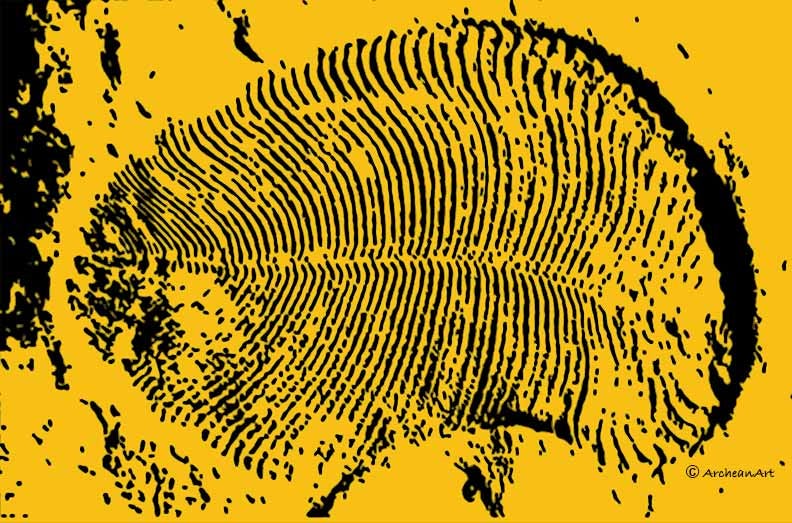The Ediacaran Period: A Flourishing Era for Early Animal Life
Written on
Chapter 1: An Introduction to the Ediacaran Period
The last time we delved into Earth's history in the Forgotten Origins series, we explored the Cryogenian era, a time when the planet was enveloped in ice. Interestingly, it was during this cold spell that animal life began to emerge. However, it was the subsequent Ediacaran Period where these organisms truly flourished. I appreciate the patience of my regular readers, as the initial section draws heavily from my earlier 2020 article, "Before the Explosion."
Section 1.1: The Scientific Landscape of Ediacaran Life
When Charles Darwin penned “On the Origin of Species” in 1859, the fossil record did not yet reveal any remnants older than the Cambrian period. It wasn't until the 1950s that conclusive evidence of intricate Precambrian lifeforms came to light. A further three decades passed before Adolf Seilacher suggested that the Ediacaran biota were not genuine animals but rather a failed evolutionary lineage he termed ‘Vendobionta.’
Contemporary researchers are more inclined to perceive the Ediacaran as a diverse ecosystem, showcasing a variety of organisms representing distinct evolutionary paths. Nature was experimenting, producing a mix of life forms, including the early ancestors of animals we recognize today. The Ediacaran Period spanned from 635 to 541 million years ago, marking the end of the Precambrian. As Earth warmed from its Cryogenian freeze, soft-bodied organisms began to populate the shallow seas. This era was pivotal for the evolution of features such as digestive systems, limbs, and complex behaviors like burrowing.
Our delayed recognition of 94 million years of evolution highlights the challenges of studying Earth's ancient past. Discovering evidence of life in geological records requires a combination of exceptional preservation conditions and sheer luck that fossil deposits remain exposed today. One challenge in fossil preservation is the fierce competition for food among ecosystems. Life consumes whatever it can find, leaving little behind. Predators eat their prey, scavengers clean up the leftovers, and bacteria decompose any remaining organic material. This continuous recycling of life makes the likelihood of fossilizing animal remains exceedingly low.
Subsection 1.1.1: Ediacaran Biota Overview

The biota of this era is named after the Ediacara Hills in South Australia. The organisms from the Ediacaran Period signify the initial significant influx of metazoans—multicellular animals—into Earth’s biosphere. While the first metazoans likely appeared during the Cryogenian, the following 94 million years saw the refinement of their survival strategies, allowing them to dominate specific ecological niches.
Many Ediacaran creatures thrived in warm, shallow seas, benefiting from sunlight and the exchange of oxygen between the atmosphere and oceans. Atmospheric oxygen played a crucial role in this evolutionary narrative. These early metazoans needed free oxygen for cellular respiration, which might have also influenced their preservation. Despite lacking true hard parts, some had collagen in their cellular structures, enhancing their toughness and increasing the chances of fossilization.
Interestingly, animals cannot synthesize collagen when atmospheric oxygen levels fall below three percent of current levels. This suggests that Earth surpassed this critical threshold during the Ediacaran Period, enabling evolution to incorporate collagen proteins into cells. Before reaching this mark, fossil evidence consisted solely of trace fossils, indicating life without any preserved remains. Once the three percent threshold was crossed, imprints of these creatures were captured in the fossil record.
Chapter 2: Early Insights into Animal Life
A 2018 article in Science highlighted a 558 million-year-old organism known as Dickinsonia, a broad, flat, leaf-shaped creature that could grow up to four feet long. Though Dickinsonia fossils have been known for over 70 years, debates regarding its classification—whether it was a large amoeba, an animal, or even a plant—persisted.
Advancements in the study of Precambrian fossils now encompass more than visual analysis. Geobiologists have developed techniques to extract fat molecules from Ediacaran fossils, identifying chemical products resulting from cholesterol breakdown, a common component in animal cell membranes. Additionally, researchers employed 3D laser scanning technology to reveal tiny, fossilized Ediacaran organisms (Ikaria wariootia) with distinct bilateral symmetry and identifiable front and rear ends. The presence of a mouth, digestive tract, and anus defines multicellular animal life, whether it be a worm or a human.
Studies on Dickinsonia fossil remains have successfully isolated lipid biomarkers, confirming its status as one of the earliest identifiable Ediacaran animals. This discovery does not imply it was the first animal but rather the earliest recognizable fossil. However, if the interpreted fossilized spongin networks in pre-Cryogenian rocks prove valid, Dickinsonia may be a relative newcomer to the animal kingdom, suggesting that the lineage of Ediacaran biota spans more than 94 million years.
The Ediacaran Period: Glimpses of the Earth's Earliest Animals - YouTube. This video provides a visual exploration of the fascinating organisms that populated the Ediacaran seas, showcasing their unique adaptations and environments.
Episode 100 - The Ediacaran Biota - YouTube. This episode delves into the Ediacaran biota's significance, highlighting its diversity and the evolutionary implications of these early life forms.


Sources:
Ediacara fauna (Source: Britannica)
Australia: The Land Where Time Began (by M.H. Monroe)
Ancient steroids establish the Ediacaran fossil Dickinsonia as one of the earliest animals (by Ilya Bobrovskiy, Janet M. Hope, Andrey Ivantsov, Benjamin J. Nettersheim, Christian Hallmann, and Jochen J. Brocks; Science)
Strange ancient animal fossil is the oldest on record, scientists say (by Ashley May; USA Today)
These bizarre ancient species are rewriting animal evolution (By Traci Watson; Nature)
Wonderful Life — The Burgess Shale and the Nature of History (by Stephen Jay Gould) — 1989, published by W. W. Norton & Company, Inc.